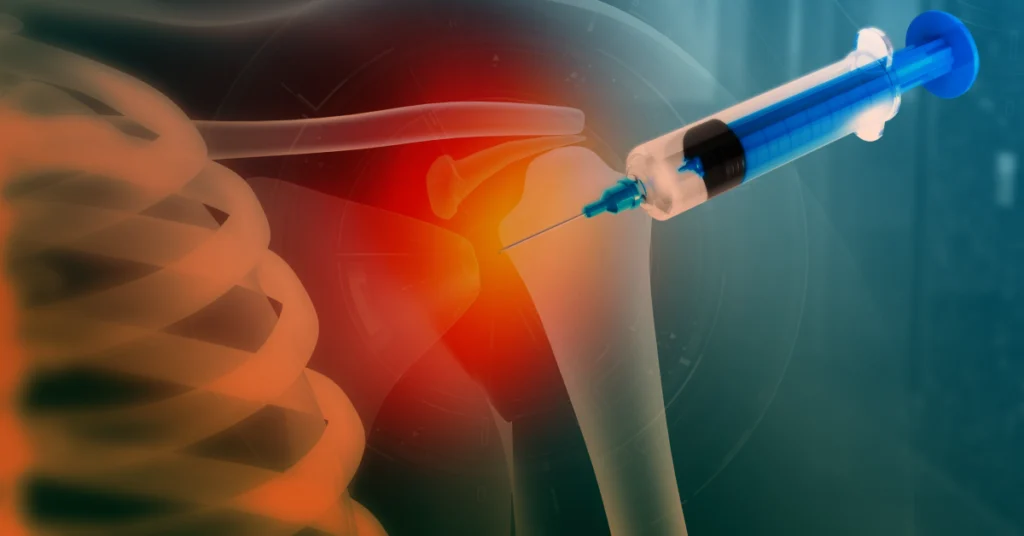In the latest edition of From the Doctor’s Desk, we’re joined by Dr. Christine Ellie to chat cortisone shots and whether they truly work as a remedy for joint pain.
Joint pain, whether caused by arthritis, overuse, or injury, can be a major disruption to your daily life. One of the most commonly recommended treatments for joint inflammation is a cortisone injection. But how effective are these injections, and what should you consider before receiving one?
Below, I break down the pros and cons of cortisone shots for joint pain—especially for the foot and ankle—to help you make an informed decision about your treatment options.
What Are the Pros of Cortisone Injections?
Cortisone injections are a well-established treatment in the medical community for reducing inflammation and pain. Here’s why they’re so commonly used:
Rapid Pain Relief
Cortisone is a powerful anti-inflammatory medication that directly targets inflamed tissues. When injected into a joint, it can significantly reduce swelling and pain, often within a few days.
Helps You Return to Your Normal Routine
For patients whose work or daily activities require mobility, cortisone injections can offer much-needed relief. When effective, they can help you return to your job, exercise, or recreational activities with reduced or no pain.
Minimally Invasive
Cortisone injections are performed quickly in-office and do not require anesthesia or surgical intervention. Most patients can resume light activity the same day, with full return to normal activity within a day or two.
Low Risk When Used Sparingly
In patients without allergies to the ingredients, side effects from a single injection are rare. In my clinical experience, most patients respond well to one, and up to three injections, spaced out over time, with little to no complications for many common orthopedic conditions.
What Are the Cons of Cortisone Injections?
While cortisone injections are effective for many, they are not without risks or limitations, especially when used too frequently or inappropriately.
Potential for Cartilage Damage
Repeated cortisone injections—particularly more than three in the same joint—can begin to weaken cartilage over time. This cartilage breakdown can contribute to the progression of arthritis or long-term joint deterioration.
Risk of Tendon Weakening
Cortisone near or within tendons can lead to tendon weakening or even rupture. For this reason, I do not typically recommend cortisone injections directly into tendons. In some cases, cortisone may temporarily mask pain from an underlying tendon tear, delaying appropriate diagnosis and treatment.
Limited Effectiveness in Advanced Joint Degeneration
In cases where joint degeneration is severe—such as advanced osteoarthritis—cortisone injections may provide little to no relief. These joints may require surgical evaluation or even reconstruction, depending on the extent of the damage.
May Not Address the Root Cause
If joint pain is caused by a systemic or autoimmune condition such as rheumatoid arthritis or lupus), cortisone shots may only offer temporary symptom relief. In such cases, long-term management requires coordination with a Rheumatologist to treat the underlying disease.
Final Thoughts
Cortisone injections can be an extremely helpful treatment when used appropriately. For many patients, especially those with joint pain caused by inflammation or mild to moderate arthritis, these injections provide fast, effective relief and allow for a return to normal activities.
However, they are not a one-size-fits-all solution. It’s important to carefully weigh the benefits and potential drawbacks—and work with a provider who can determine the most appropriate treatment based on the specific cause of your pain.
Schedule a Consultation
If you’re experiencing joint pain in your foot or ankle and are considering a cortisone injection, I encourage you to schedule a consultation with me, Dr. Christine Ellie, at NY Bone and Joint Specialists.
Together, we’ll develop a personalized treatment plan to help you move comfortably, safely, and without pain.





